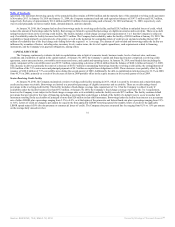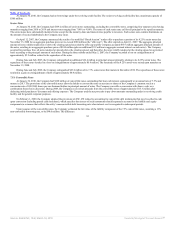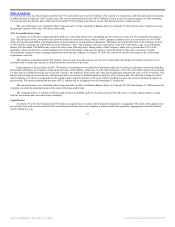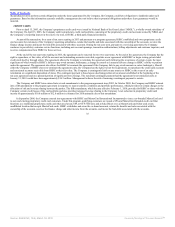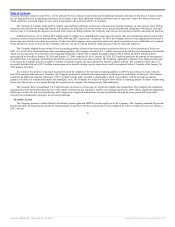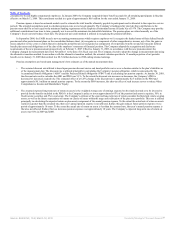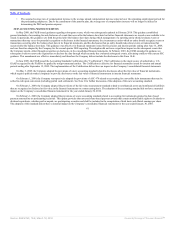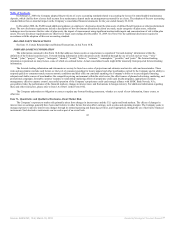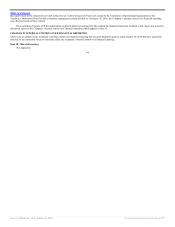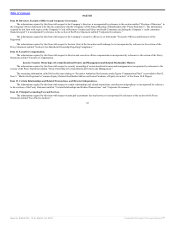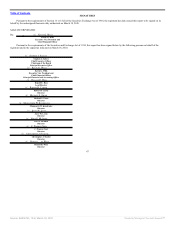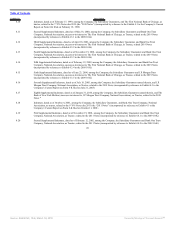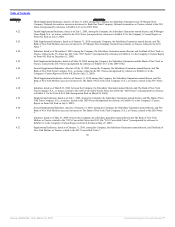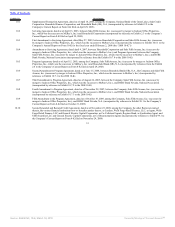Saks Fifth Avenue 2009 Annual Report Download - page 43
Download and view the complete annual report
Please find page 43 of the 2009 Saks Fifth Avenue annual report below. You can navigate through the pages in the report by either clicking on the pages listed below, or by using the keyword search tool below to find specific information within the annual report.
Table of Contents
• The assumed average rate of compensation increase is the average annual compensation increase expected over the remaining employment periods for
the participating employees. Due to the curtailment of the pension plan, the average rate of compensation increase will no longer be utilized in
determining the PBO and pension expense.
NEW ACCOUNTING PRONOUNCEMENTS
In May 2009, the FASB issued guidance regarding subsequent events, which was subsequently updated in February 2010. This guidance established
general standards of accounting for and disclosure of events that occur after the balance sheet date but before financial statements are issued or are available to be
issued. In particular, this guidance sets forth the period after the balance sheet date during which management of a reporting entity should evaluate events or
transactions that may occur for potential recognition or disclosure in the financial statements, the circumstances under which an entity should recognize events or
transactions occurring after the balance sheet date in its financial statements, and the disclosures that an entity should make about events or transactions that
occurred after the balance sheet date. This guidance was effective for financial statements issued for fiscal years and interim periods ending after June 15, 2009,
and was therefore adopted by the Company for the second quarter 2009 reporting. The adoption did not have a significant impact on the subsequent events that
the Company reports, either through recognition or disclosure, in the consolidated financial statements. In February 2010, the FASB amended its guidance on
subsequent events to remove the requirement to disclose the date through which an entity has evaluated subsequent events, alleviating conflicts with current SEC
guidance. This amendment was effective immediately and therefore the Company did not include the disclosure in this Form 10-K.
In June 2009, the FASB issued the Accounting Standards Codification (the “Codification”). The Codification is the single source of authoritative, U.S.
GAAP recognized by the FASB to be applied by nongovernmental entities. The Codification is effective for financial statements issued for interim and annual
periods ending after September 15, 2009. The implementation of the Codification did not have an impact on the Company’s consolidated financial statements.
On May 3, 2009, the Company adopted the provisions of a new accounting standard related to disclosures about the fair value of financial instruments,
which requires publicly-traded companies to provide disclosures on the fair value of financial instruments in interim financial statements.
On February 1, 2009, the Company retrospectively adopted the provisions of ASC 470 related to accounting for convertible debt instruments that may be
settled in cash upon conversion (including partial cash settlement). See Note 6 for further discussion of the adoption of this new accounting standard.
On February 1, 2009, the Company adopted the provisions of the fair value measurement standard related to nonfinancial assets and nonfinancial liabilities
that are recognized or disclosed at fair value in the financial statements on a nonrecurring basis. The adoption of the accounting standard did not have a material
impact on the Company’s consolidated financial statement for the year ended January 30, 2010.
On February 1, 2009, the Company adopted the provisions of a new accounting standard related to accounting for instruments granted in share-based
payment transactions as participating securities. This update provides that unvested share-based payment awards that contain nonforfeitable rights to dividends or
dividend equivalents, whether paid or unpaid, are participating securities and shall be included in the computation of both basic and diluted earnings per share.
The adoption of this standard did not have a material impact on the Company’s consolidated financial statements for the year ended January 30, 2010.
41
Source: SAKS INC, 10-K, March 18, 2010 Powered by Morningstar® Document Research℠


